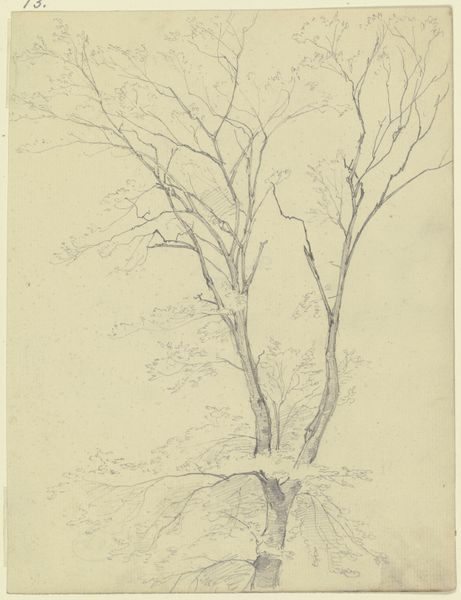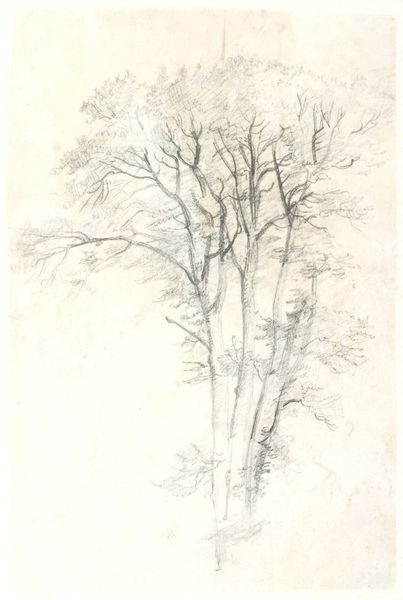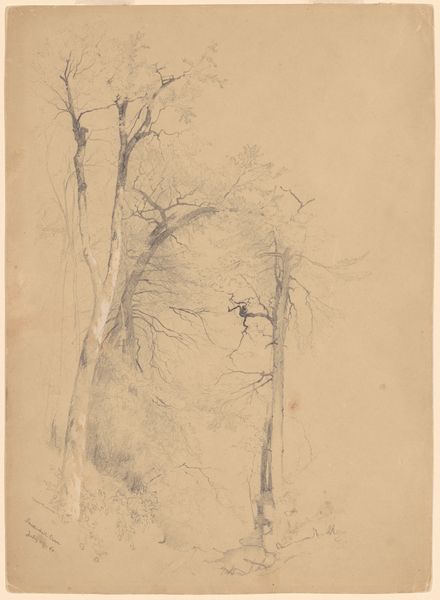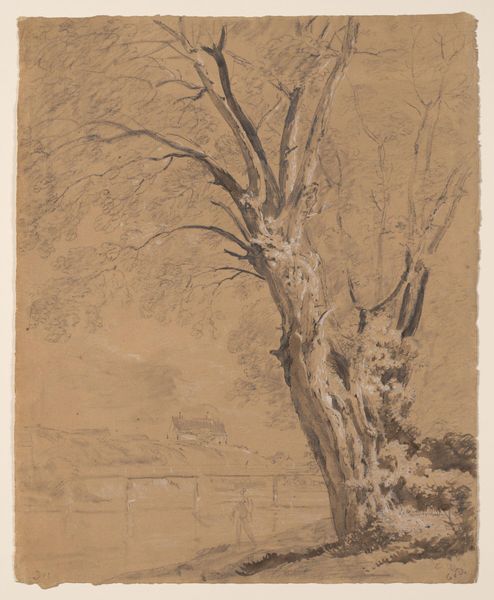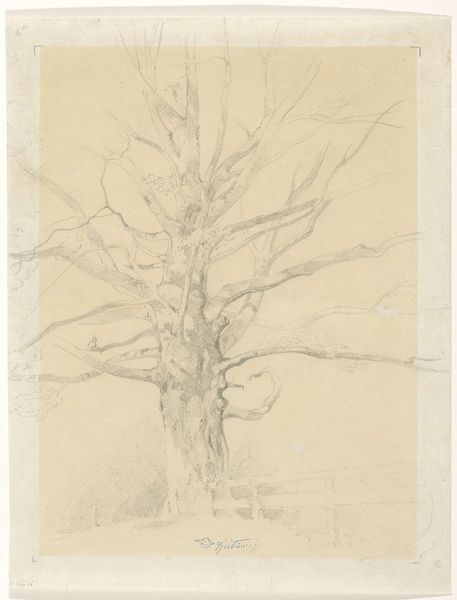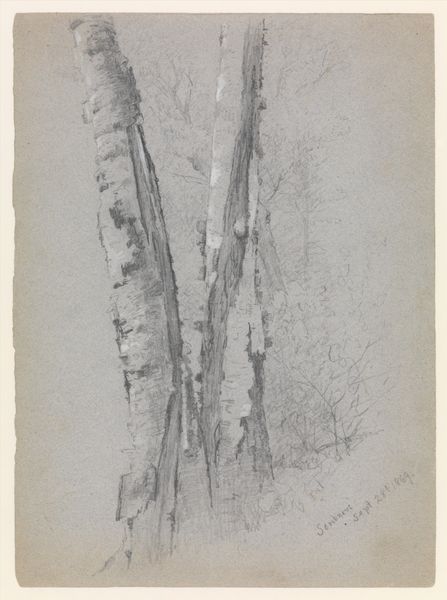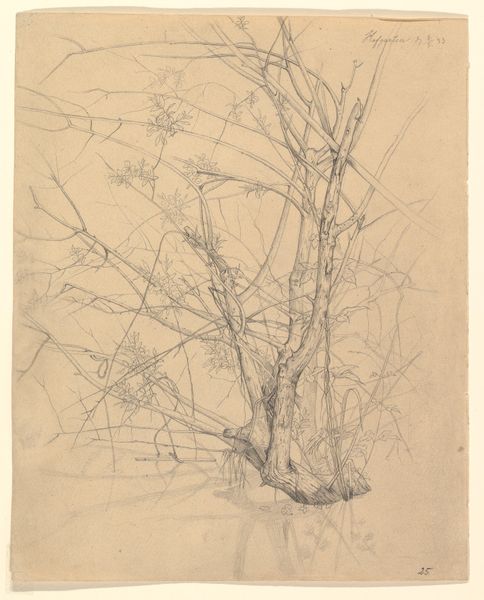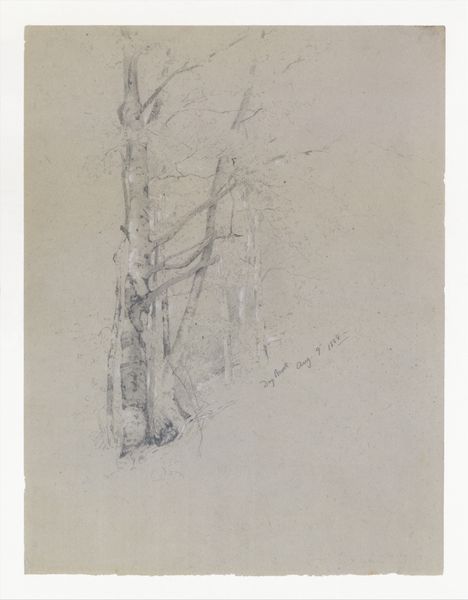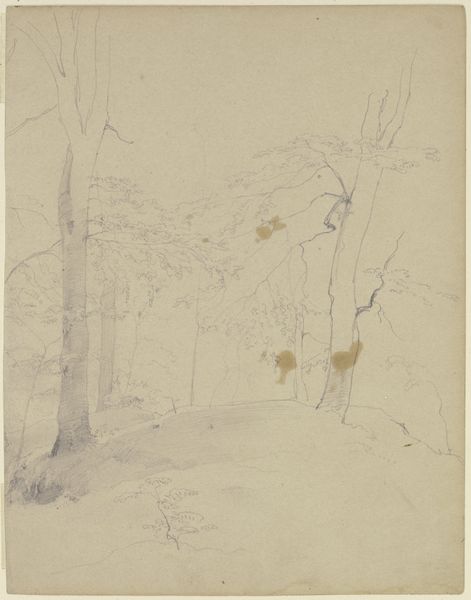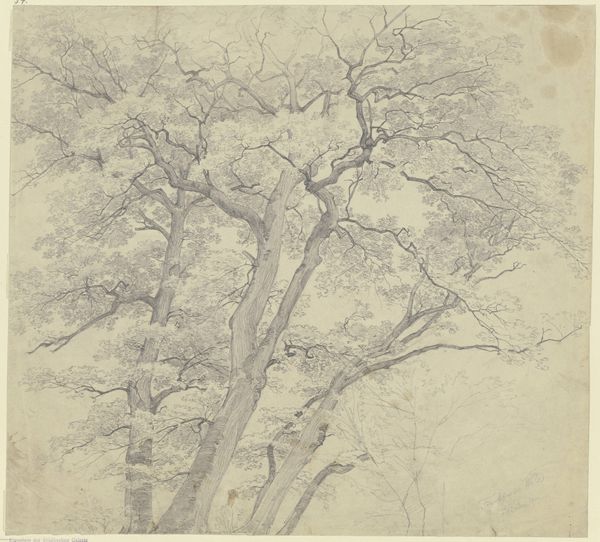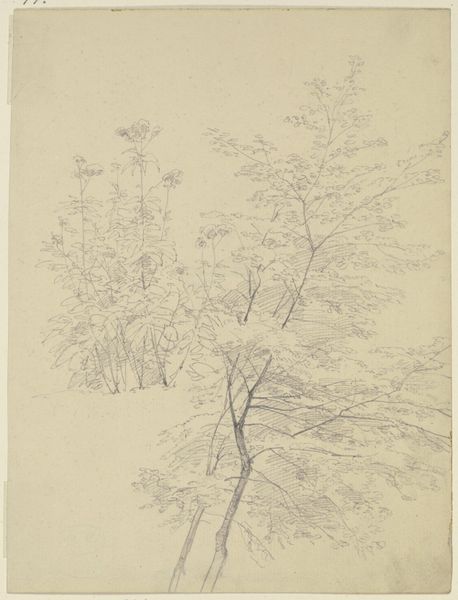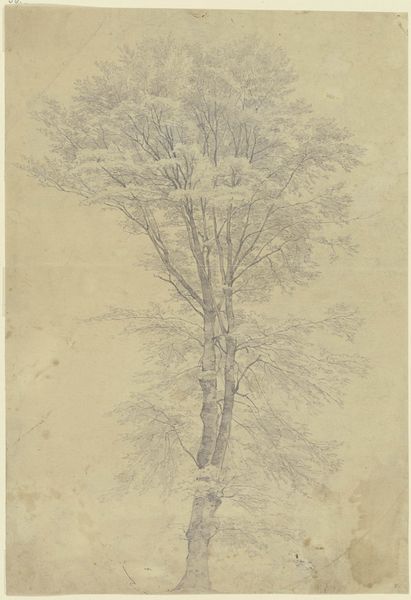
drawing, pencil
#
drawing
#
landscape
#
pencil drawing
#
romanticism
#
pencil
Dimensions: sheet: 44.1 x 28.8 cm (17 3/8 x 11 5/16 in.)
Copyright: National Gallery of Art: CC0 1.0
Curator: Heinrich Dreber created this pencil drawing, "A Stand of Trees," around 1840. The detail achieved with a relatively simple material is remarkable. Editor: Yes, it evokes such stillness. There's a delicate quality to the lines that almost makes it seem like the forest is holding its breath. What's your take on the composition? Curator: It is about close observation. Consider the paper itself—likely handmade with a degree of texture influencing the pencil’s movement. Then there’s the very visible application, stroke upon stroke building form and shadow; the artist foregrounds the labor involved, making the act of representation itself visible. We also see the beginnings of industrial forestry in Germany which began reshaping not only material resources but cultural views. Editor: I see the marks, certainly, but I am also compelled by the strategic use of light and shadow. The subtle gradations give shape to the trees and imply the soft diffusion of sunlight filtering through leaves. How each line interacts and contributes to the illusion of form interests me more. Curator: But can we ignore how this scene becomes romanticized? The individual encounter within this wood creates a powerful metaphor about German identity—consider the period, filled with social reforms, proto-industrial development, and new modes of travel which opened up both access and exploitation. Editor: Perhaps. However, looking at it as a formal exercise in tone and texture reveals how Dreber used the pencil to its fullest potential. There's a clear structural rhythm in the way he balances the darker, heavier trunks against the delicate, almost ethereal quality of the branches and foliage. I think this shows a deep understanding of composition beyond just romantic ideals. Curator: Of course, the pencil allows a unique level of detail readily available at an industrial scale, allowing art to emerge beyond academies as landscapes and picturesque views became popular commodities accessible beyond aristocratic consumers. Editor: Maybe. Still, the very act of slowing down to carefully render such minute detail creates, to me, an undeniably strong feeling of peace. The overall structure really draws one in, regardless of the socio-economic background! Curator: An astute observation that underscores both its inherent artistry and cultural meaning. Editor: Agreed. Let's move on.
Comments
No comments
Be the first to comment and join the conversation on the ultimate creative platform.
